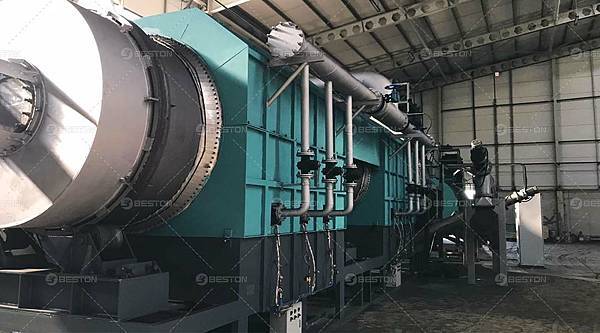Investing in biomass recycling projects has emerged as a prudent avenue, combining environmental stewardship with economic viability. As the world grapples with the imperative to adopt sustainable practices, charcoal making machine price becomes a pivotal consideration in the broader spectrum of investment strategies. Let's delve into the intricacies of navigating this burgeoning landscape.
Understanding Biomass Recycling Dynamics
Biomass recycling involves harnessing organic materials, such as agricultural residues and forestry byproducts, to produce valuable commodities like biochar and renewable energy. The cornerstone of a successful venture lies in a strategic investment approach, carefully calibrated to maximize returns.
Biochar Production and its Economic Implications
Biochar, a carbon-rich product obtained through the pyrolysis of biomass, holds promise as a soil conditioner and carbon sequestration tool. The economic viability of biomass recycling projects hinges on the efficient production and utilization of biochar. This necessitates a keen understanding of the entire production chain, from biomass collection to the market deployment of biochar.
Key Investment Strategies
Before delving into the investment pool, a comprehensive feasibility analysis is imperative. Assessing the availability of biomass feedstock, market demand for biochar, and regulatory considerations provides a foundational understanding. This phase also involves a meticulous evaluation of the charcoal making machine price, a linchpin in the entire biomass recycling infrastructure.
The selection of the right technology can significantly impact the overall efficiency and cost-effectiveness of a biomass recycling project. Opting for advanced pyrolysis technologies, coupled with continuous process improvements, ensures not only higher biochar yields but also a streamlined operational workflow.
Risk mitigation is inherent in the diversification of biomass feedstock sources. A judicious mix of agricultural residues, forestry byproducts, and organic waste broadens the raw material base, fostering resilience against market fluctuations and seasonal variations.
Understanding the dynamics of the biochar market is pivotal. Strategic marketing, coupled with a targeted approach to product placement, ensures that the produced biochar finds its niche. Establishing partnerships with agricultural enterprises, organic farms, and carbon offset programs can create a steady demand, thus securing a reliable revenue stream.
Biomass recycling projects inherently contribute to carbon sequestration and emission reduction. Exploring avenues for carbon credits and environmental incentives becomes a crucial facet of the investment strategy. Governments and international bodies often provide financial incentives for projects that align with sustainability goals.
- Thorough Feasibility Analysis
- Technology Selection and Optimization
- Diversification of Biomass Feedstock
- Strategic Marketing and Product Placement
- Evaluating Carbon Credits and Environmental Incentives

The Crucial Role of Charcoal Making Machine Price
At the heart of any biomass recycling project lies the charcoal making machine. The efficiency, capacity, and durability of this machinery are integral factors influencing the overall cost structure. The charcoal making machine price is not just a numerical value; it is a critical variable that requires nuanced consideration.
Advanced Pyrolysis Technologies and Cost Implications
Investing in state-of-the-art pyrolysis technologies may incur a higher initial charcoal making machine price. However, the long-term benefits, including increased production efficiency and reduced operational costs, often outweigh the upfront investment. It's a strategic play that balances immediate financial considerations with sustained profitability.
Operational Longevity and Maintenance Costs
While assessing the biomass pyrolysis machine price, it's imperative to consider the operational longevity and associated maintenance costs. Opting for robust machinery with a proven track record might translate into higher upfront expenses, but it can mitigate the risk of frequent breakdowns and the ensuing repair costs.
Financial Models and Risk Mitigation
The success of any investment strategy hinges on a robust financial model and a proactive approach to risk mitigation. Biomass recycling projects, inherently influenced by external factors such as weather conditions and market dynamics, require a prudent financial cushion.
Contingency Planning
Incorporating contingency plans into the financial model is a shrewd move. Unforeseen challenges, be it supply chain disruptions or regulatory changes, can be navigated more effectively with a well-thought-out contingency strategy.
Leveraging Financial Instruments
Exploring financial instruments such as project finance, green bonds, and grants can provide a financial buffer and enhance the overall viability of biomass recycling projects. Institutions and investors with a focus on sustainable initiatives may find these projects aligning with their investment criteria.
In Conclusion
Investing in biomass recycling projects, with a nuanced understanding of the charcoal making machine price and its implications, offers a pathway to both environmental conservation and economic prosperity. By intertwining technological advancements, strategic planning, and a keen eye on market dynamics, investors can navigate the complexities of biomass recycling and carve a niche in the evolving landscape of sustainable business endeavors.


 留言列表
留言列表